
Descent: FreeSpace – The Great War, known as Conflict: FreeSpace – The Great War in Europe, is a 1998 space combat simulation IBM PC compatible computer game developed by Volition, when it was split off from Parallax Software, and published by Interplay Productions. In 2001, it was ported to the Amiga platform as FreeSpace: The Great War by Hyperion Entertainment. The game places players in the role of a human pilot, who operates in several classes of starfighter and combats against opposing forces, either human or alien, in various space-faring environments, such as in orbit above a planet or within an asteroid belt. The story of the game's single player campaign focuses on a war in the 24th century between two factions, one human and the other alien, that is interrupted in its fourteenth year by the arrival of an enigmatic and militant alien race, whose genocidal advance forces the two sides into a ceasefire in order to work together to halt the threat.
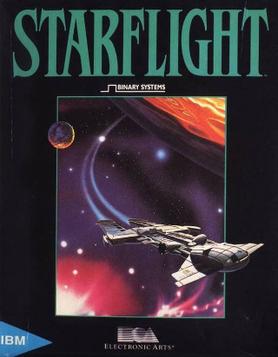
Starflight is a space exploration, combat, and trading role-playing video game created by Binary Systems and published by Electronic Arts in 1986. Originally developed for IBM PC compatibles, it was later ported to the Amiga, Atari ST, Macintosh, and Commodore 64. A fully revamped version of the game was released for the Sega Genesis in 1991.

Starflight 2: Trade Routes of the Cloud Nebula is a 1989 science fiction video game developed by Binary Systems and published by Electronic Arts as the sequel to the successful Starflight. It features a combination of space exploration, role-playing and strategy within a futuristic setting. The player commands a spaceship capable of traveling to the game world's 150 solar systems, communicating with or attacking other spaceships, and landing on planetary surfaces which may be explored with a crewed rover for plot clues, minerals and alien lifeforms. Game mechanics and the overall look and feel closely resemble the earlier Starflight game, but many new features are introduced including an interstellar trade-based economy, new sentient alien races, and new spacecraft accessories and artifacts. The player is tasked with discovering the ultimate source of the advanced spacecraft technology and unlimited fuel supply which provide a military advantage to the Spemin, a hostile alien race threatening to annihilate or enslave humanity. A major part of the game consists of earning enough money to pay for spaceship upgrades and crew training by engaging in interstellar trade and barter with various alien cultures at their planetary trading posts.
Battlefleet Gothic is a naval miniature wargame that was produced by Games Workshop from 1999 to 2013 with Andy Chambers as the primary developer. A spin-off of the science-fantasy setting of Warhammer 40,000, the game has players command fleets of large spaceships belonging to one of several spaceborne factions. Although the wargame's miniatures and rulebooks are no longer supported by Games Workshop, two video game adaptations have been made since its cancellation in 2013.
Renegade Legion is a series of science fiction games that were designed by Sam Lewis, produced by FASA, and published from 1989 to 1993. The line was then licensed to Nightshift games, a spin-off of the garage company Crunchy Frog Enterprises by Paul Arden Lidberg, which published one scenario book, a gaming aid, and three issues of a fanzine-quality periodical before reverting the license.
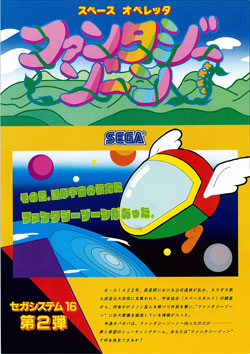
Fantasy Zone is a 1986 arcade video game by Sega, and the first game in the Fantasy Zone series. It was later ported to a wide variety of consoles, including the Master System. The player controls a sentient spaceship named Opa-Opa who fights an enemy invasion in the titular group of planets. The game contains a number of features atypical of the traditional scrolling shooter. The main character, Opa-Opa, is sometimes referred to as Sega's first mascot character.

Raptor: Call of the Shadows is a vertically scrolling shooter developed by Cygnus Studios and published by Apogee Software. Its working title was "Mercenary 2029". It was released on April 1, 1994 for MS-DOS compatible systems. The first episode of the game, "Bravo Sector", was distributed as shareware. The other two episodes were sold commercially.
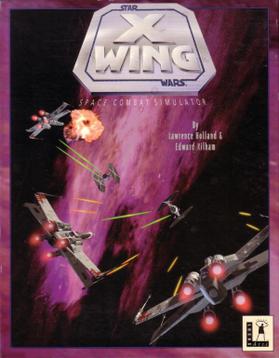
Star Wars: X-Wing is a space simulation video game, the first of the X-Wing combat flight simulation games series. The player's character flies starfighters, including the X-wing, for the Rebel Alliance. The narrative precedes and parallels the events of Star Wars Episode IV: A New Hope.
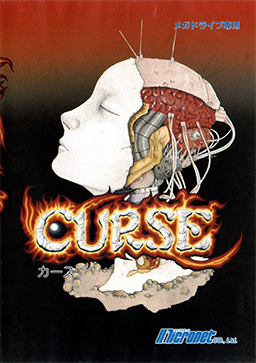
Curse is a 1989 scrolling shooter video game developed by Micronet for the Mega Drive. Although an American release was planned, it was never officially released outside Japan.

Lightspeed is a video game developed and released by MicroProse in 1990. It features a space flight simulator game and action game elements with an emphasis on strategy and exploration. The box describes the title as an "Interstellar Action and Adventure" game. The game features space exploration, trade, combat and diplomacy in the same vein as 4X games such as Master of Orion. Lightspeed, unlike the popular series of turn-based strategy games, plays out in real-time.

Haegemonia: Legions of Iron, or Hegemonia: Legions of Iron, is a 3D real-time strategy game developed by Digital Reality for Microsoft Windows, and by Microïds for OS X, iOS, and Android.
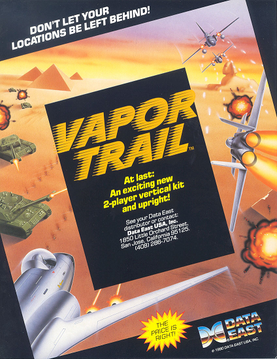
Vapor Trail: Hyper Offense Formation, known in Japan as Kuuga – Operation Code Vapor Trail and usually simply referred to as Vapor Trail, is a 1989 shoot 'em up arcade game developed and published by Data East. Vapor Trail was followed by Rohga: Armor Force and Skull Fang.

Star Wars: TIE Fighter is a 1994 Star Wars space flight simulator and space combat video game, a sequel in the Star Wars: X-Wing series. It places the player in the role of an Imperial starfighter pilot during events that occur between The Empire Strikes Back and Return of the Jedi.

Space Empires: Starfury is a 4X turn-based strategy computer game developed by Malfador Machinations and published by Shrapnel Games on September 22, 2003. The game is set in a Space Empires universe containing planetary systems linked by warp points, or wormholes. The game allows the player to control a single spaceship to explore the universe.

Star Strike is a single-player video game, released by Mattel for its Intellivision video game system in 1981. The Intellivision's best-selling game in 1982, with over 800,000 copies sold, Star Strike was inspired by the attack on the Death Star in the 1977 film Star Wars. The player must drop bombs on alien weapons silos before Earth moves into range.

Star Raiders is a video game for the Xbox 360, PlayStation 3, and Microsoft Windows. Developed by Incinerator Studios, it was published in May 2011 by Atari SA. It is a re-imagining of 1980's Star Raiders which was the killer app for the Atari 8-bit computers. The remake is an action, first-person spaceship combat game in which the player travels through a starfield in pursuit of the enemy Zylons. It adds a new storyline, customizable ships, and multiplayer gameplay with several modes.

Starpoint Gemini 2 is a space trading and combat simulator developed by the Croatian-based Little Green Men Games development studio. It is a direct sequel to Starpoint Gemini, which was released in 2010.

Artemis: Spaceship Bridge Simulator is a multiplayer co-operative spaceship simulation game created by Thomas Robertson for Windows, iOS, and Android devices. The game is designed to be played between three and eight players over a local area network, with each player using a separate computer that provides a different spaceship bridge station, such as helm control or engineering.
Starfall Online is an MMO real-time strategy video game with wargame elements, that mixes intense tactical combat with in-depth spaceship customization. The project is developed by independent Russian company Snowforged Entertainment.

Star Conflict is a free-to-play dynamic massively multiplayer online space action game. The core of the game is PvP spaceships battles, PvE (Co-Op) missions and an open world.















